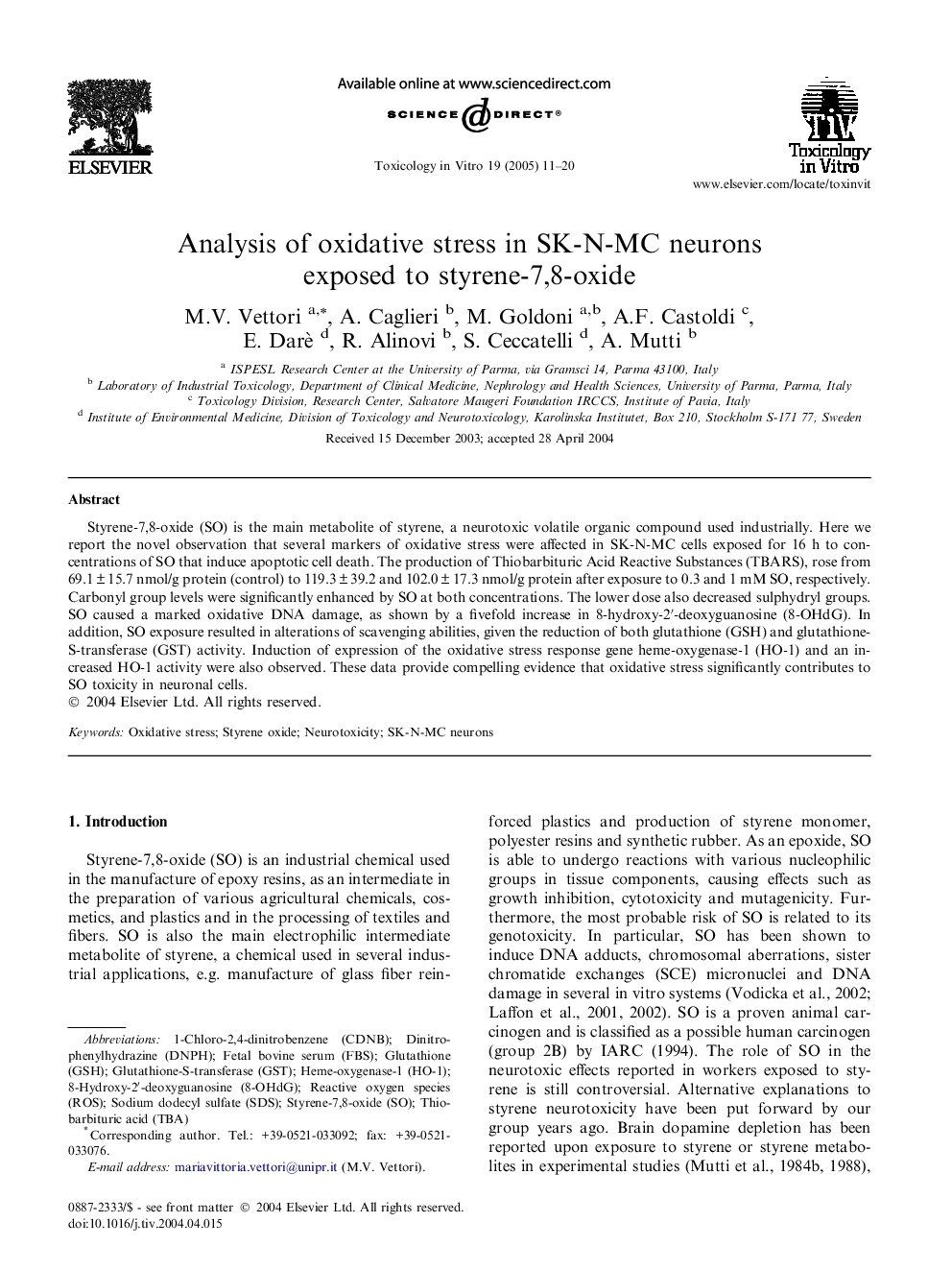| Article ID | Journal | Published Year | Pages | File Type |
|---|---|---|---|---|
| 9038334 | Toxicology in Vitro | 2005 | 10 Pages |
Abstract
Styrene-7,8-oxide (SO) is the main metabolite of styrene, a neurotoxic volatile organic compound used industrially. Here we report the novel observation that several markers of oxidative stress were affected in SK-N-MC cells exposed for 16 h to concentrations of SO that induce apoptotic cell death. The production of Thiobarbituric Acid Reactive Substances (TBARS), rose from 69.1 ± 15.7 nmol/g protein (control) to 119.3 ± 39.2 and 102.0 ± 17.3 nmol/g protein after exposure to 0.3 and 1 mM SO, respectively. Carbonyl group levels were significantly enhanced by SO at both concentrations. The lower dose also decreased sulphydryl groups. SO caused a marked oxidative DNA damage, as shown by a fivefold increase in 8-hydroxy-2â²-deoxyguanosine (8-OHdG). In addition, SO exposure resulted in alterations of scavenging abilities, given the reduction of both glutathione (GSH) and glutathione-S-transferase (GST) activity. Induction of expression of the oxidative stress response gene heme-oxygenase-1 (HO-1) and an increased HO-1 activity were also observed. These data provide compelling evidence that oxidative stress significantly contributes to SO toxicity in neuronal cells.
Keywords
Related Topics
Life Sciences
Environmental Science
Health, Toxicology and Mutagenesis
Authors
M.V. Vettori, A. Caglieri, M. Goldoni, A.F. Castoldi, E. Darè, R. Alinovi, S. Ceccatelli, A. Mutti,
